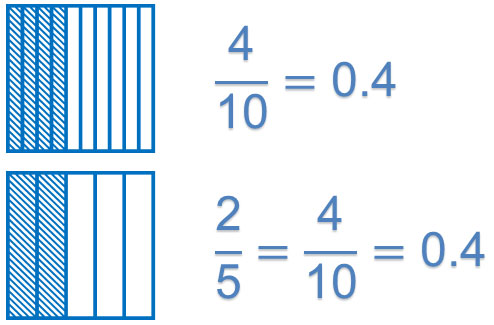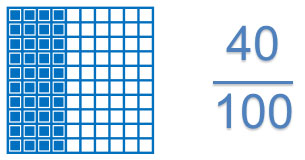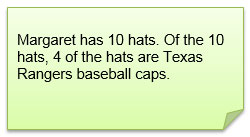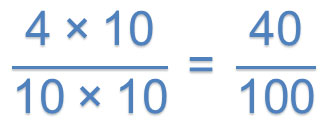
In previous grades, you used fractions and decimals to represent parts of a whole.
For example, if the square below represents 1 whole unit, then the whole unit can be broken into parts with equal area.

If the whole is broken into 100 parts, then each part is called 1 percent. You can use the symbol % to represent a percent. For example, if the square below represents one whole unit, it is broken into 100 parts. Of those 100 parts, 40 are shaded blue.

A percent is a part-to-whole ratio given in terms of parts per 100. Consider the following situation.

The ratio of hats that are Texas Rangers baseball caps is represented with the fraction 4 over 20 4 10 . You can use a scale factor of 10 to generate an equivalent fraction with a denominator of 100.

The ratio 40 over 100 40 100 is equivalent to the ratio 4 over 20 4 10 and expresses the ratio in terms of the number of parts: 40 parts per 100 parts. We can say that 40% of the hats that Margaret has are Texas Rangers baseball caps. The percent symbol (%) is used to indicate a percentage of parts per 100 parts.
In this lesson, you will investigate different ways to represent percents. You will also use fractions, decimals, and percents to represent the same quantity.